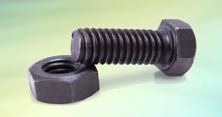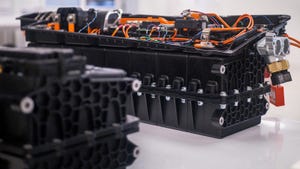Piper Plastics, a supplier of plastic and metal components to a range of industries based in Chandler, AZ, has been named a finalist in the 2015 Golden Mousetrap Awards in the Materials & Assembly: Engineering Materials category. The company is recognized for its Kyron Max technology, which combines proprietary high-pressure molding with an engineered plastic that offers mechanical properties that match and, in some cases exceed, metals.
December 18, 2014
Piper Plastics, a supplier of plastic and metal components to a range of industries based in Chandler, AZ, has been named a finalist in the 2015 Golden Mousetrap Awards in the Materials & Assembly: Engineering Materials category. The company is recognized for its Kyron Max technology, which combines proprietary high-pressure molding with an engineered plastic that offers mechanical properties that match and, in some cases exceed, metals. The annual awards program celebrates the return and renaissance of manufacturing in North America by honoring companies and individuals who are driving progress. The winners will be announced at a ceremony on Feb. 10, 2015, in Anaheim, CA, in conjunction with the Pacific Design & Manufacturing event.
 Introduced in July 2014, Kyron Max polymers are said to bridge the gap between high-volume injection molding, which produces parts economically but with limited mechanical properties, and pre-preg lay ups, which result in stronger components but is a relatively expensive and labor-intensive process. The materials and molding process developed by Piper Plastics allow high-volume injection molding of parts in strengths that approach lay-up composite polymers, according to the company. The technology enables the replacement of a broad array of metal parts with plastic equivalents while reducing material volume. The company initially embarked on this project to address an unmet need in the aviation industry, but the technology has manifold applications in a range of sectors, including the medical device space.
Introduced in July 2014, Kyron Max polymers are said to bridge the gap between high-volume injection molding, which produces parts economically but with limited mechanical properties, and pre-preg lay ups, which result in stronger components but is a relatively expensive and labor-intensive process. The materials and molding process developed by Piper Plastics allow high-volume injection molding of parts in strengths that approach lay-up composite polymers, according to the company. The technology enables the replacement of a broad array of metal parts with plastic equivalents while reducing material volume. The company initially embarked on this project to address an unmet need in the aviation industry, but the technology has manifold applications in a range of sectors, including the medical device space.
"We often ask our customers, 'What's utopia for you?'" Materials Engineering Manager Dave Wilkinson told PlasticsToday. "We were having that conversation with an aerospace OEM, and they told us their utopia was a fastener for use in airplane interiors that could replace traditional metal parts," says Wilkinson. The OEM had spent the better part of 10 years looking for a suitable material in vain. "They could not find a polymer that combined the needed strength and consistency," explains Wilkinson.
Piper Plastics went to work and after a couple of years had developed Kyron Max materials, which can replicate the original metal design and reduce material volume while imparting all the benefits of plastics.
Kyron Max materials are based on engineering polymers that include PEEK, PA, PPA, PPS, and PEI to which sizing technology is applied to enhance adhesion of a special fiber with the plastic.
To illustrate the value of the technology, Piper has published a case study on its website that shows how a standard #10-32 bolt molded in a Kyron Max thermoplastic achieved a customer's strength and cost requirements at less than half the weight of a titanium bolt that it was using.
Medical applications also can benefit greatly from the technology, says Wilkinson. The company is no stranger to the medtech sector—its quality systems are certified to ISO 13485 and Wilkinson figures it's the leading processor of PEEK for medical implants in North America and probably number two in the world—and several medical manufacturers currently are evaluating the materials.
"The medical industry uses a lot of metals inside and outside the body in fixation devices, for example," says Wilkinson, "and it is looking to replace those materials with plastics, which don't pose problems when x-rays or MRIs are needed."
Lightweighting and cost considerations are also driving medical device companies to consider Kyron Max, he adds. That said, the company currently is not looking at implantable applications and is focusing, instead, on instruments, fixation devices, and diagnostic products that are used outside the body. "There are tons of possibilities," says Wilkinson, adding that it may be some time before the technology sees its way into finished products in the medical as well as aviation spaces. "As you know, the qualification times for medical and aerospace are lengthy," he notes.
However, you will be seeing Kyron Max quite soon in an array of sporting and recreational goods. "Demand has been going gangbusters for everything from archery equipment, bicycles, and firearms to kayak paddles," says Wilkinson. When you can combine lightweighting and performance, a stream of people suddenly come knocking at your door. "This is a new space for us and the demand, frankly, has been amazing," says Wilkinson, so much so that the company is now looking at hiring personnel to keep up.
Now that, as they say, is a good problem to have.
Norbert Sparrow is Senior Editor at PlasticsToday. Follow him on twitter @norbertcsparrow and Google+.
About the Author(s)
You May Also Like




